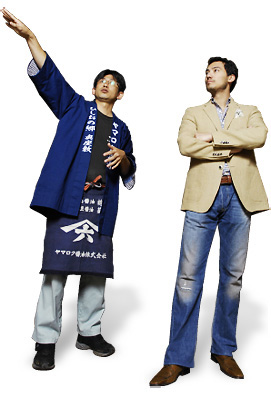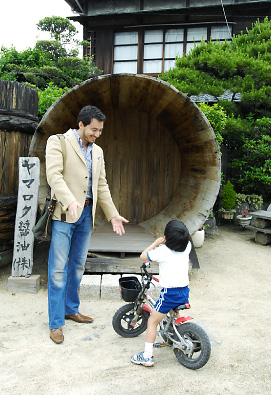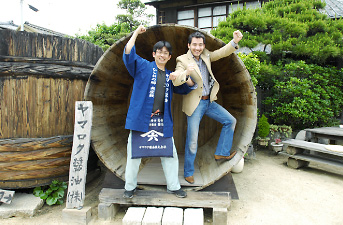| Yamaroku makes two kinds of soy sauce: Kikubishio, a standard dark soy sauce, and Tsurubishio, a twice-brewed soy sauce. In addition, the factory produces Kiku-tsuyu, dark soy sauce combined with soup stock, and Ponzu, dark soy sauce flavored with the juice of Japanese citrus fruits. |
|
Kikubishio soy sauce is made from sweet-flavored black soybeans from Tanba in Kyoto. Tsurubishio is made with round domestically grown soybeans. The production process for twice-brewed Tsurubishio is rather extravagant. Soy sauce that has been matured for about two years is returned to the wooden vat and fermented once again with soy sauce instead of salt water. |
|
The wooden single-storied soy sauce warehouse has been designated as a tangible cultural property. A charming structure built in the mid-nineteenth century, it is representative of the Hishio no Sato area. |


